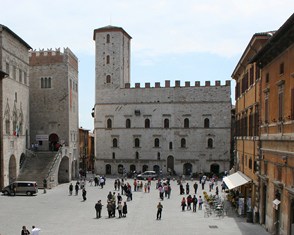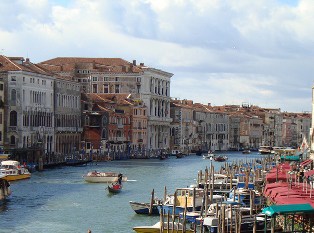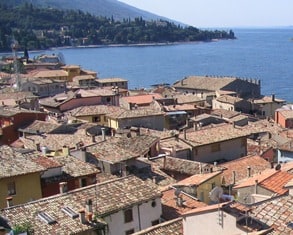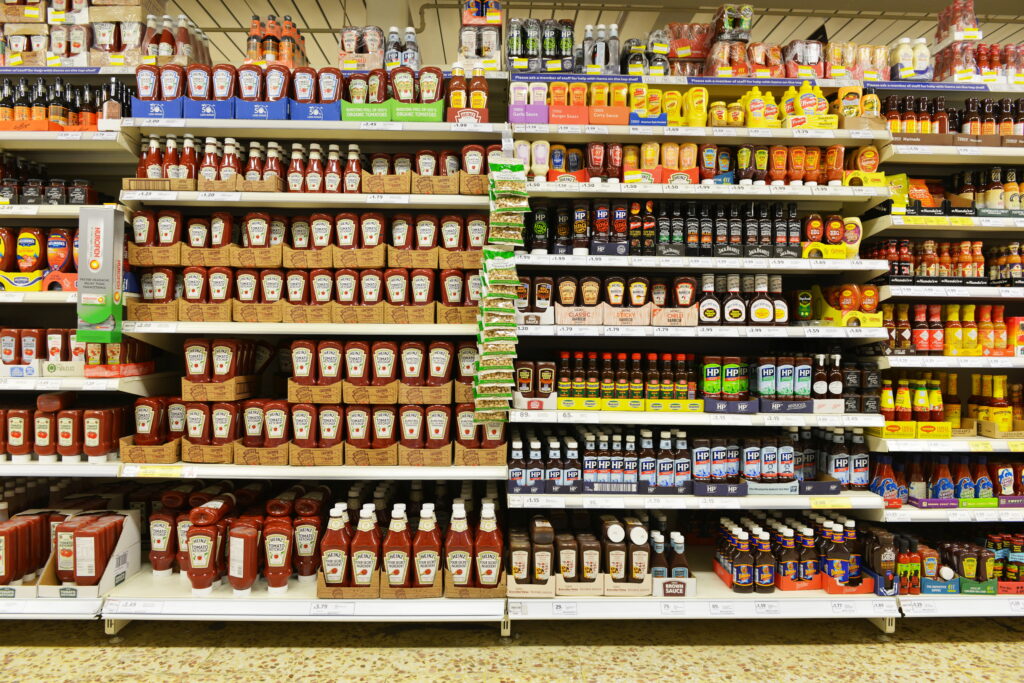As the only British representative invited, it was a privilege to participate in the launch of the Italian report, Il Riciclo Ecoefficiente, Eco-efficient recycling: the Italian recycling industry between the challenges of globalisation and the financial crisis. The report was presented on 28 November 2012 to Italian representatives of the European Parliament and leaders of other organisations and associations to demonstrate the role of the Italian recycling industry in the Energy Roadmap 2050 with the emphasis on the efficient use of resources towards establishing a low carbon emission economy for Europe.

The report claims that the Italian separate collection and recycling system coped with the financial crisis of 2008 better than other countries. But the most interesting conclusion is that, in contrast with the UK, their high rates of collection and recovery are accommodated predominantly within the Italian industrial reprocessing system, with the amount of recovered material exported very limited in terms of both types of material and tonnages. Nevertheless there are a number of structural issues that will need to be addressed to ensure that in the future more reclaimed materials can be used within Italy and by extension within the EU.
Introduction
In his introduction Roberto de Santis, the President of CONAI, the organisation which oversees the operations of the six material organisations managing packaging waste streams within Italy, noted that the total MSW and C&I waste generated in Italy amounts to 160m tpa, with household waste at 32m tpa and of that 6.9m tpa is packaging waste. With regard to packaging waste recovery it is estimated that in Italy three quarters comes from household sources. As to the amount of packaging waste being sent to landfill in 2011 this amounted to 26.3% but this was up from 25.3% in 2010. However, it was pointed out that the emphasis was now on waste prevention so that in future even if the proportion plateaus the tonnage sent to landfill will decline. Indeed, with the opening of several new incineration facilities, albeit mainly in northern Italy, the amount of waste generally sent to landfill will decline.
Main findings from the report
The study and report, now is in its third edition, was sponsored by the Recycling and Recovery Working Group of the Kyoto Club at the request of the packaging recovery and recycling sector organisations in Italy. The reports author, Duccio Bianchi presented the main findings. The report shows the importance of recycling as a key strategic opportunity to fulfil the targets for a competitive low-carbon economy by 2050 as well as the interim targets for 2020, which include: a reduction of greenhouse gas emissions, an increase in the amounts of energy obtained from renewable resources and the energy savings obtainable from reclaimed waste.

While in 2008 there were concerns that the global financial crisis would adversely impact the waste collection and recycling sectors in Italy in the event the effects were short lived. The amounts of materials recovered separately and recycled remained significant with the amounts growing in all sectors. However, for Italy for the first time not all the reclaimed waste could be absorbed within Italy so surpluses were placed on the international market, whose role is recognised as potentially increasingly significant, even for Italy. However, overall Italy still remains a net importer of secondary materials with 7.5m tonnes imported in 2010 against 2.5m tonnes of exports.
Within the European Community there almost 4 million enterprises involved in the collection and recycling of waste with 0.9m involved in collection and 2.9m engaged in recycling industries. The total number of people employed are respectively 49m and 22.3m, although it has to be recognised that not all of these in the collection sector are employed full-time with the recovery of reclaimable materials.
Steel and iron decline
Traditionally the iron and steel sector throughout Europe has been highly dependent on reclaimed ferrous materials. Due the decline in output from the steel sector in 2009 the recycling rate actually went up to 83% but settled at 79% in 2010. For aluminium primary production in Italy fell by 30% between 2008 and 2010 compared to only 5% for secondary aluminium. The separate collection and recycling of aluminium packaging over that two year period grew by 20% and amounted to a record recovery rate of 72.4% of packaging consumption in 2010.
Separate collection of plastic packaging continued to increase in 2009 and 2010 despite the decline in consumption of plastic packaging. However, with paper the decline in production in Italy also affected secondary material consumption so that the modest increases in use of these materials was insufficient to absorb the higher collection rates and thus these surpluses were exported, particularly to China. In 2010, therefore 8% of secondary plastics and 18% of paper and board generated within Italy were exported from Italy but this was partially compensated for by imports of the same secondary waste materials.
Overall Italy boasts a strong recovery and recycling system and each year recovers 33m of secondary materials, a figure that excludes both inert materials and organic fractions and places Italy, second only to Germany it is claimed.
The Environmental Benefits
According to the report, recycling in Italy saved 55 tonnes CO2eqv in 2010, which is equivalent to 10% of the total emissions generated by the country. These benefits are still largely retained even if the reclaimed materials are exported. Using WRAPs analysis the report shows that export related emissions are only 8-21% of the total associated with the total associated with the recovery of waste. In addition, the study also reveals that while intensive household collection systems, such as door to door systems increase emissions as a result of more vehicle usage the quality and quantity of recyclable materials offsets the higher collection emissions.
The report recognises that for secondary materials there is a global market but there are differences between materials so that several materials have European outlets while others have international outlets. World exports of nine main secondary materials were worth over $90bn in 2010 with the total exported materials amounted to 200 million tonnes. Italy recognises that a strong international secondary materials market is a prerequisite to maintaining
The report, however, goes on to examine what will be the implications for Italy and other European countries as transition and emerging countries generate more waste that will be more effectively managed to generate materials for recycling in those economies. The reports conclusion is that international demand is doomed to decrease, particularly for low-quality ones. (However, one has to look very closely at both the demand and supply positions because the supply of Chinese recyclables may be adversely affected by the Chinese government (national and local) predilection to move towards developed economies collection and segregation practices, thereby eliminating or at least severely affecting the vibrant informal sector and its key role in reclamation of waste.)
Strengthening the recycling industry: Key component towards the green economy
Although the focus was on Italy there were more general aspects examined, especially regarding the need to try to ensure that the European Union MSs generally should reclaim and recycle more resources within the EU. However, the report also recognised that the trade in secondary resources was now world-wide and that prices had increased over the period from 2004 to 2008 with prices almost doubling from 32.5bn to 60.3bn in 2008.
The overall eco-industry at the EU 27 level saw turnover increase from 232bn in 2004 to 319bn in 2008, equal to 2.5% of European GDP and the recycling sector was the most dynamic after the renewable energy sector with a 17% annual growth rate compared to an annual 8.3% growth rate for the eco-industry generally.
Four Actions to boost the Italian Recycling Industry
The report concluded with four recommendations to promote green growth and employment. These were:
- Promotion of markets through green procurement policies and practices
- Ensuring that measures to promote the recovery of energy from waste do not inhibit the diversion and recovery of waste through recycling
- The integration of collection, sorting and processing systems, especially for post-consumer collection, in order to improve the quality of secondary recovered materials
- Promotion of research and innovation especially for the recovery of rare earth materials, demand for which estimated to increase by between 2 and 4 times by 2030 compared to 2006, diapers and textiles.
The second point is of concern in Italy as the incentive payments for generating electricity from waste are the highest in Europe and therefore could easily eat into systems designed to collect and recover waste. However, due to public opposition against incineration in Italy, which is most effective in the centre and south, the development of incineration capacity in Italy has been very slow.
But is all well in Italy?
Subsequent to this meeting, of course, once again in December Italy has been plunged into a further political crisis with the rejection of the policies designed to preserve Italy within the Eurozone. However, even during the discussions after the presentation of the report there were some issues that were aired by the politicians (MEPs), often tackling the broader European perspective as well as the Italian aspects. For example, the exports of secondary materials from Europe were described as carbon leakage.
Italy has its North/South divide so that the north has standards and performance comparable to the best in Europe while the South has huge problems in conforming to any aspect of the European waste and resource management agenda. Most damning was the admission that due to its illegal landfills Italy is subject to a fine of 265,000 per day until the problem is fixed!
In conclusion
In contrast to the UK, where I attended the letsrecycle.com Packaging Conference the day before the European Parliament presentation by the Italian recycling sector, the experience of Italys waste processing recycling industry is one which most European countries would wish to emulate, not just the UK. Why is it that the UK and, to a lesser extent other EU MSs, are now so dependent of overseas markets, very predominantly outside the EU? Perhaps the answer lies with the structure of the economy. Britains economic structure is now focused on services, especially financial services over the past few decades and to the neglect of the manufacturing sector and to a lesser extent the primary production sector mining and quarrying, fishing, forestry and agriculture which now accounts for less than 5% of GDP and employment. Italys primary production is not as low but its manufacturing sector is certainly much more significant.
In Britain we are more likely to purchase Italian manufactured products, especially furniture, lighting and food items than from other European countries. Therefore the packaging sector will be supported because all these items will require several levels of packaging. In the case of wine and olive oil this will be predominantly in green glass, adding to our green glass surplus but allowing Italian green cullet a ready outlet for their glassworks. Huge numbers of cardboard boxes are being re-used by industry in Italy, for example, but even if new cardboard boxes are being used then these will be manufactured in Italy.









Subscribe for free